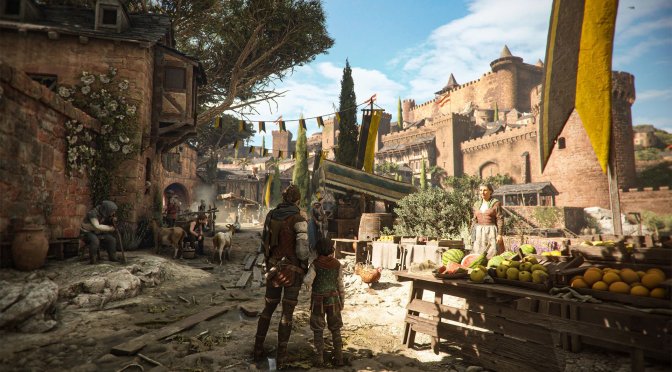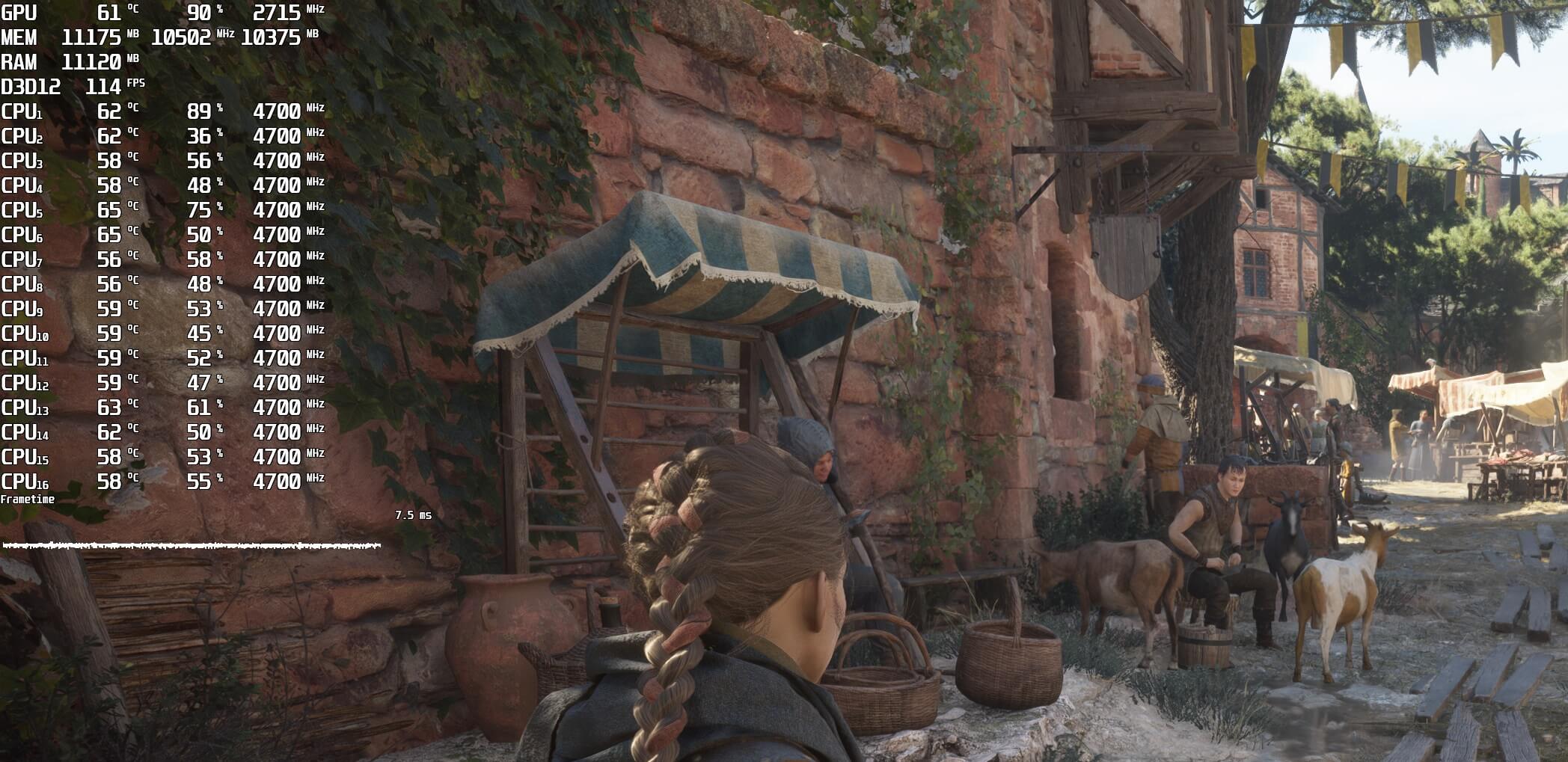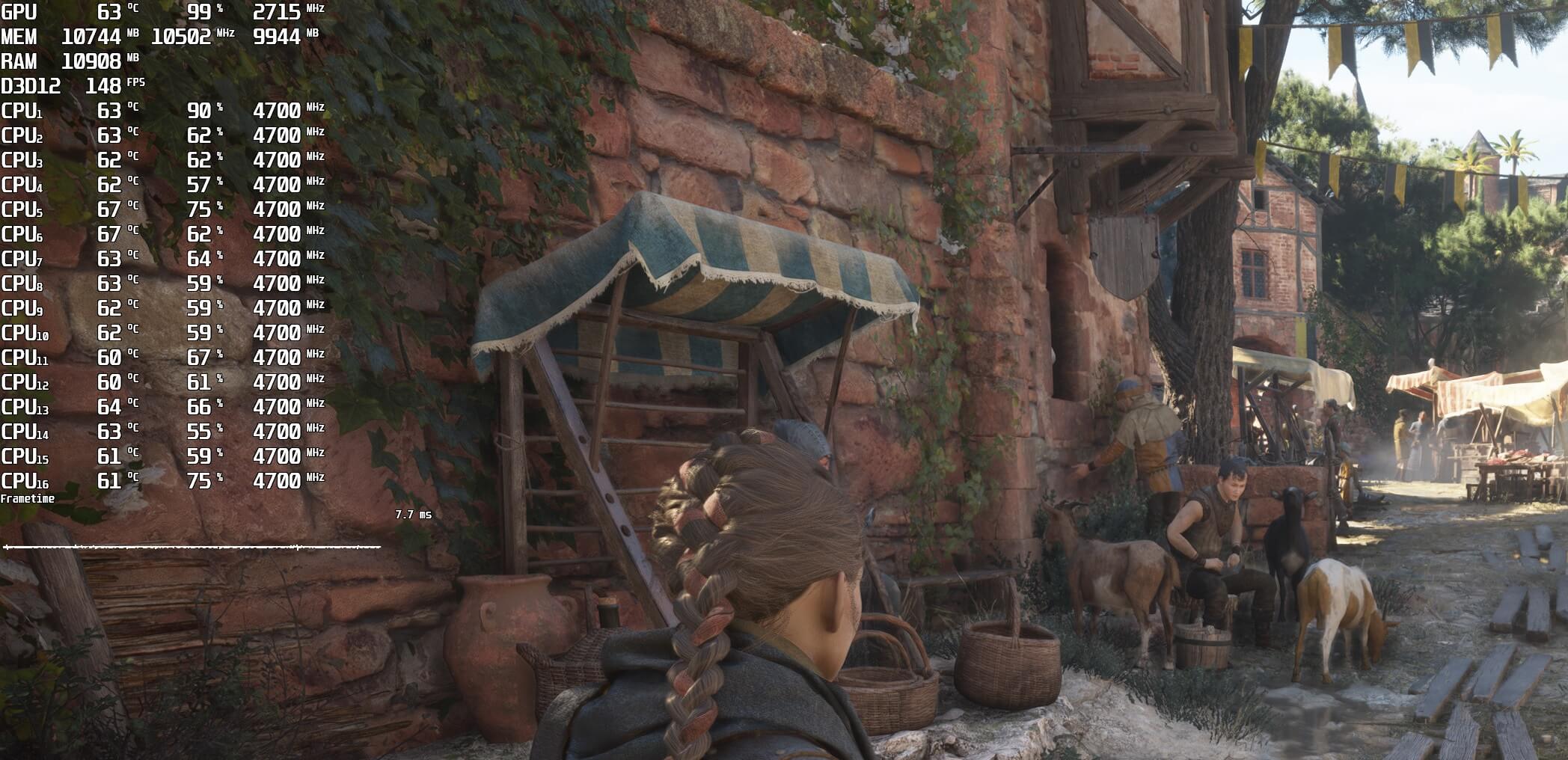Asobo has just released a new update for A Plague Tale: Requiem that adds support for Ray Tracing. Now while Asobo claims that it has used Ray Tracing in order to enhance both ambient occlusion and shadows, the game only offers an option for ray-traced shadows. Not only that but these ray-traced shadows completely break the in-game ambient occlusion, making the game look worse.
Below you can find some comparison screenshots. The ray-traced version is on the left, whereas the rasterized version is on the right. As you can see, we do get more realistic shadows (some are sharper and others are softer) with RT shadows. However, the overall image now looks flat as there aren’t any AO effects.
In case you did not open the images in new tabs, we’ve zoomed in on the following comparison. The top image is with RT and the bottom image is without RT. This comparison perfectly showcases how much better the rasterized version actually is.
What’s really disappointing here is that in some areas, the game can feel like a mixed bag. In the following comparison, the grass near Alicia (on the right) looks better with RT. However, the distant grass looks better without RT (the distant grass with RT does not have any shadows and looks flat).
My guess is that this is a bug, so let’s hope that Asobo will be able to fix it. Otherwise, there is literally no point at all in enabling Ray Tracing. Not only do you get a worse performance, but you also get an inferior overall image quality.
Performance-wise, the NVIDIA GeForce RTX4090 has no trouble running these Ray Tracing effects with DLSS 3 at 4K/Ultra Settings. Since RT Shadows will also bring an additional CPU hit, we highly recommend using DLSS 3’s Frame Generation. By doing so, you can get over 100fps on the NVIDIA RTX4090.
We might have a dedicated PC Performance Analysis for the game’s Ray Tracing effects if Asobo addresses this issue. Right now, we don’t really recommend enabling RT in this game!

John is the founder and Editor in Chief at DSOGaming. He is a PC gaming fan and highly supports the modding and indie communities. Before creating DSOGaming, John worked on numerous gaming websites. While he is a die-hard PC gamer, his gaming roots can be found on consoles. John loved – and still does – the 16-bit consoles, and considers SNES to be one of the best consoles. Still, the PC platform won him over consoles. That was mainly due to 3DFX and its iconic dedicated 3D accelerator graphics card, Voodoo 2. John has also written a higher degree thesis on the “The Evolution of PC graphics cards.”
Contact: Email















